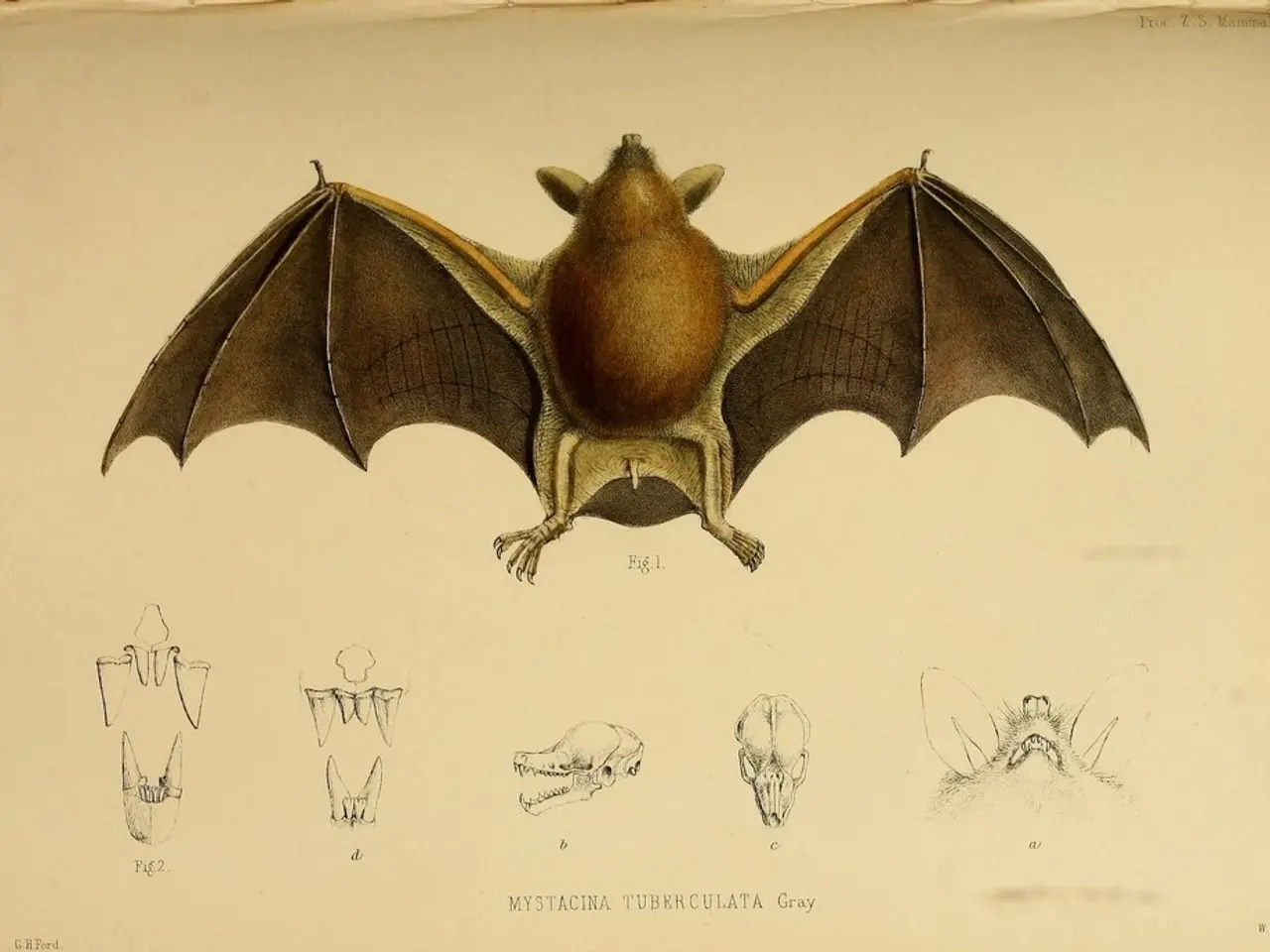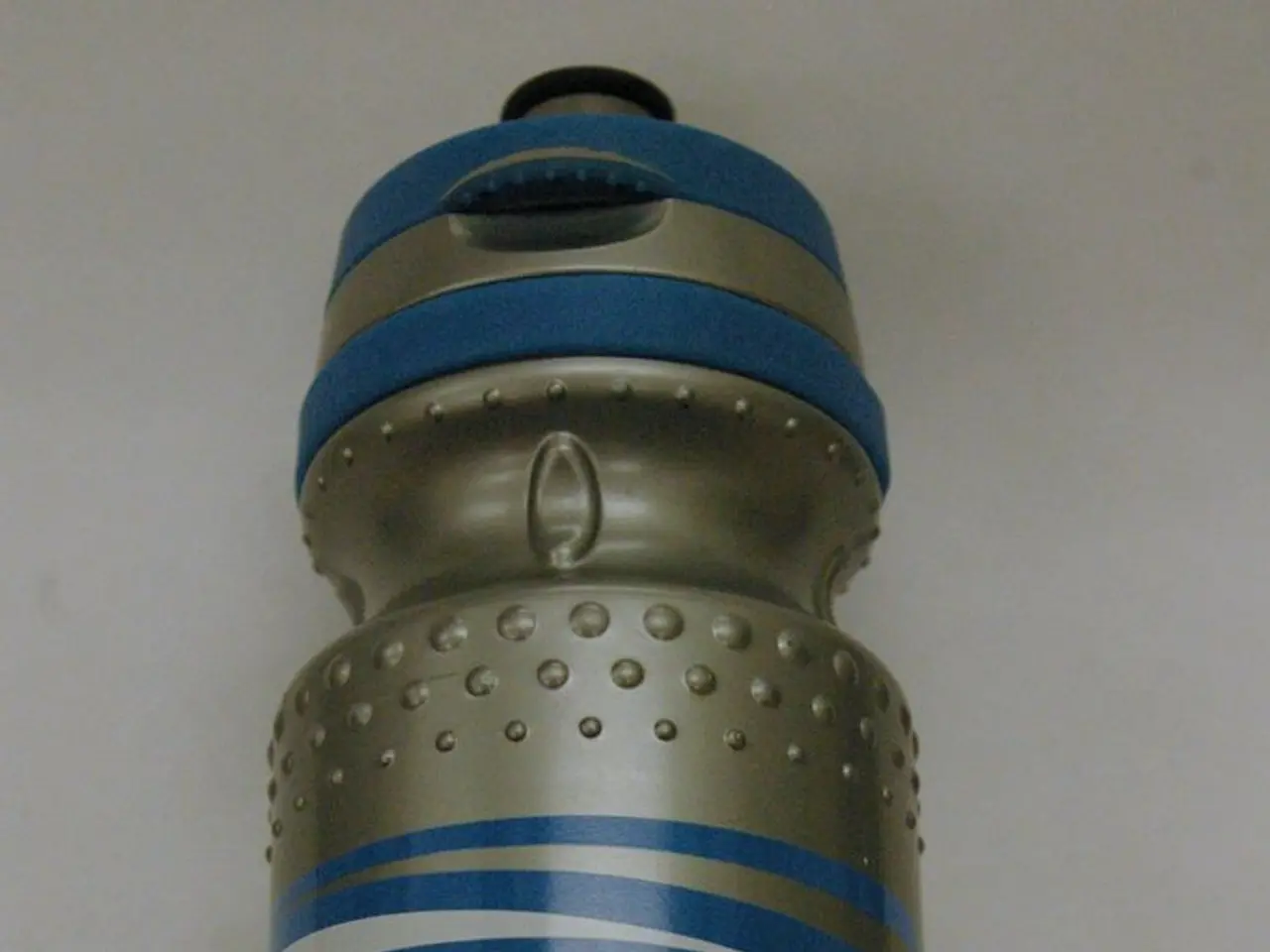Unveiling Potential Hidden Capacities in DNA for Cellular Healing During Hibernation
New Insights into Hibernator Genetics May Lead to Breakthrough Treatments
Researchers have uncovered a significant discovery that could revolutionize the treatment of metabolic disorders and neurodegenerative diseases. The findings, published in the journal Science, suggest that hibernator-specific non-coding DNA regulatory regions could be pivotal genetic elements in the human genome.
These regulatory regions, found near key loci such as the human FTO locus, are not individual genes but hibernator-specific non-coding DNA regulatory regions. These sequences do not code for proteins but interact with nearby genes to control their expression. In hibernators, these regulatory regions have evolved through deletion or accelerated evolution, enabling profound metabolic and neuroprotective adaptations.
The FTO gene region is involved in fat mass regulation and obesity risk in humans and hibernating animals. Hibernator-specific regulatory regions near the FTO locus help animals rapidly gain weight before hibernation and manage energy use during fasting periods, by tuning the expression of multiple genes in the metabolic network.
Researchers emphasize that it is not unique protein-coding genes responsible for hibernation-associated superpowers but rather conserved gene regulatory networks involving chromatin accessibility and gene expression changes. This means that targeting gene regulatory elements and chromatin dynamics, especially those regulating the FTO locus and surrounding networks, could provide novel therapeutic strategies.
Because these regulatory regions influence metabolic rate and neuroprotection, understanding and potentially manipulating analogous elements in humans might open new avenues to treat type 2 diabetes (by modulating metabolism and fat storage) and Alzheimer's disease (by protecting nervous tissue during metabolic stress).
The research was led by Susan Steinwand, a neurobiology and anatomy researcher at U of U Health, and Christopher Gregg, a professor of neurobiology at U of U. The team made whole-genome comparisons across mammals to identify conserved DNA regions that are stable in most species but show accelerated change in hibernators.
Gregg is co-founder of Primordial AI, a Utah-based biotech startup that aims to develop drugs that mimic the genetic advantages hibernators have. He believes that finding and harnessing these genetic regions could lead to new treatments for type 2 diabetes, Alzheimer's disease, and other disorders.
During hibernation, mammals enter a state of torpor, or physiological dormancy, allowing them to survive months without food and water. The new studies focus on the DNA regions that help hibernating mammals recover from muscle atrophy, insulin resistance, and brain damage. Specific regions of non-coding DNA act as "master switches" for controlling functional gene responses to starvation and refeeding in hibernators.
The hub genes, a good starting point to design medicines to affect those genes, according to Gregg, are a key focus of the research. These genes get turned up or turned down during fasting in mice, and their regulation and activity are disproportionately affected by the hibernator-accelerated regions.
In summary, hibernator-specific non-coding DNA regulatory regions, particularly those near the FTO locus, may be pivotal genetic elements in the human genome with the potential to inspire new treatments for metabolic disorders and neurodegenerative diseases based on the adaptations seen in hibernating mammals.
- The future of medical-conditions and chronic diseases treatment could be influenced by new insights into hibernator genetics.
- The journal Science published a significant discovery that could revolutionize treatment for neurodegenerative diseases and metabolic disorders.
- Hibernator-specific non-coding DNA regulatory regions could be crucial genetic elements in the human genome.
- These regulatory regions are not individual genes but hibernator-specific non-coding DNA sequences.
- These sequences do not code for proteins but interact with nearby genes to control their expression.
- In hibernators, these regulatory regions have evolved through deletion or accelerated evolution.
- The FTO gene region, involved in fat mass regulation and obesity risk in humans and hibernating animals, is one such key locus.
- Hibernator-specific regulatory regions near the FTO locus help animals rapidly gain weight before hibernation.
- These regions also help manage energy use during fasting periods.
- The metabolic network's multiple genes are tuned by these regulatory regions in hibernators.
- It is not unique protein-coding genes that are responsible for hibernation-associated superpowers.
- Rather, conserved gene regulatory networks involving chromatin accessibility and gene expression changes govern hibernation.
- Targeting gene regulatory elements and chromatin dynamics, especially those regulating the FTO locus and surrounding networks, could provide novel therapeutic strategies.
- Understanding and potentially manipulating analogous elements in humans might open new avenues to treat type 2 diabetes and Alzheimer's disease.
- The research was led by Susan Steinwand and Christopher Gregg, who made whole-genome comparisons across mammals to identify conserved DNA regions.
- Gregg co-founded Primordial AI, a biotech startup that aims to develop drugs mimicking the genetic advantages hibernators have.
- The new studies focus on the DNA regions that help hibernating mammals recover from muscle atrophy, insulin resistance, and brain damage.
- Specific regions of non-coding DNA act as "master switches" for controlling functional gene responses to starvation and refeeding in hibernators.
- The hub genes are a key focus of the research, getting turned up or turned down during fasting in mice.
- These genes' regulation and activity are disproportionately affected by the hibernator-accelerated regions.
- Tackling metabolic disorders and neurodegenerative diseases through technology and science could be a boon for the health-and-wellness industry.
- Fitness-and-exercise enthusiasts might incorporate new treatments based on hibernator research into their lifestyle.
- The insights could also have implications for environmental-science, addressing climate-change and promoting sustainable manufacturing processes.
- Mental-health advocates could discover potential treatments for neurological-disorders through the study of these gene regulatory networks.
- Nutrition experts may focus on skin-conditions and eye-health aspects related to the FTO gene region.
- Hearing specialists could explore connections betweenh hearing issues and hibernator gene regulatory networks.
- In the realm of data-and-cloud-computing, artificial-intelligence could aid in analyzing the vast amounts of genetic data generated.
- Investors in the technology, finance, energy, and retail sectors may eye opportunities presented by hibernator gene research for growth.
- Books on education-and-self-development may delve into the hibernator genetics breakthrough in further detail.
- Online shopping platforms could see an uptick in demand for products related to health, fitness, and lifestyle improvements inspired by hibernator gene research.




